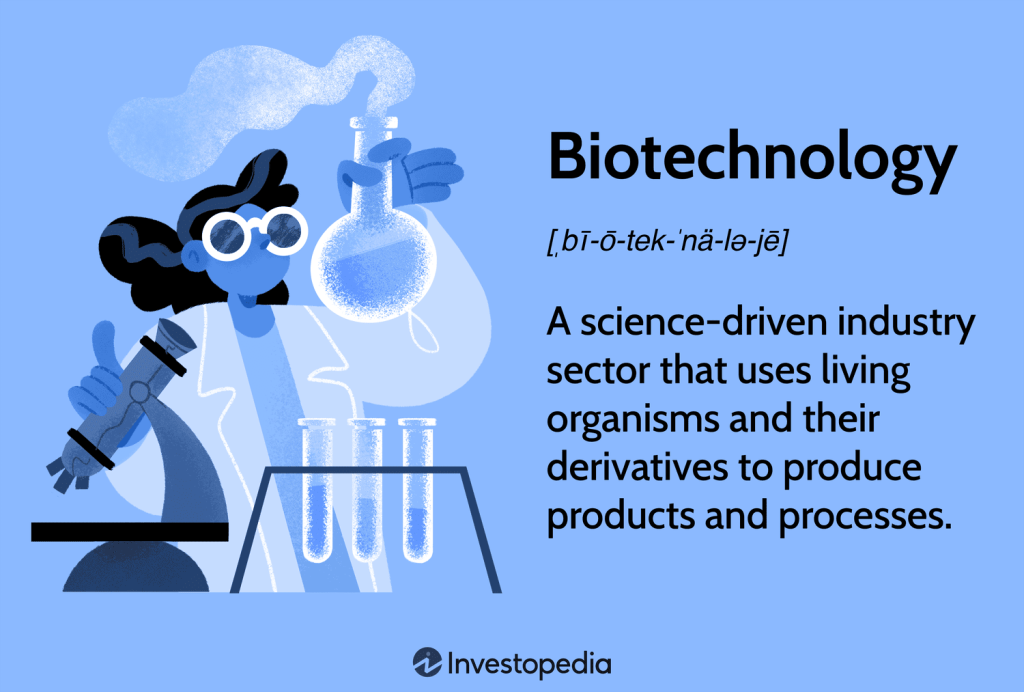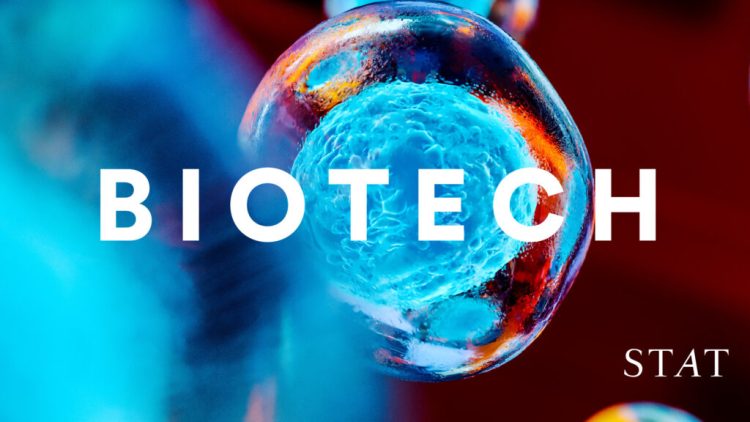Introduction
Biotechnology is one of the most transformative scientific disciplines of the 21st century, bridging biology, chemistry, engineering, and information technology to create solutions for healthcare, agriculture, industry, and environmental sustainability. At its core, biotechnology harnesses living organisms, cells, and biomolecules to develop products and processes that improve human life.
Modern biotechnology is no longer confined to laboratories; it influences global healthcare, sustainable agriculture, renewable energy, and bio-manufacturing. The integration of genomics, proteomics, synthetic biology, and computational tools has accelerated innovation, enabling rapid discovery and translation from basic research to practical applications.
This article explores the fundamentals of biotechnology, core technologies, recent innovations, and the interdisciplinary approaches that define this rapidly evolving field. Readers will gain a comprehensive understanding of how biotechnology works, why it matters, and the emerging techniques shaping its future.
1. Fundamental Principles of Biotechnology
1.1 Understanding Life at the Molecular Level
At its essence, biotechnology involves manipulating biological systems at the molecular and cellular level. Key concepts include:
- DNA and RNA: The genetic blueprint of life. Techniques like PCR, sequencing, and gene editing allow scientists to read, copy, and modify genetic material.
- Proteins and Enzymes: Functional molecules that drive cellular processes. Recombinant DNA technology enables the production of therapeutic proteins, industrial enzymes, and diagnostic reagents.
- Cells and Organisms: Living systems used as platforms for producing bio-products, studying disease mechanisms, or testing interventions.
1.2 Biological Information Flow
The central dogma of molecular biology—DNA → RNA → Protein—is foundational. Biotechnology leverages this flow to:
- Introduce or modify genes to produce desired proteins.
- Silence or edit genes to treat diseases.
- Engineer metabolic pathways in microorganisms for chemical production.
2. Core Technologies in Modern Biotechnology
2.1 Genetic Engineering
Genetic engineering involves direct modification of an organism’s genome. Techniques include:
- Recombinant DNA (rDNA): Combining DNA from multiple sources to create new genetic constructs. Used in insulin production, vaccines, and biofuels.
- Gene Editing Tools:
- CRISPR-Cas Systems: Precision editing at specific genomic sites, revolutionizing therapeutics and functional genomics.
- TALENs and Zinc-Finger Nucleases: Earlier gene-editing technologies still used for targeted applications.
- Applications: Crop improvement (disease resistance, yield enhancement), gene therapy, and synthetic biology.
2.2 Cell and Tissue Engineering
Biotechnology increasingly involves designing and cultivating cells and tissues for research and therapy:
- Stem Cells: Pluripotent and multipotent cells used for regenerative medicine and disease modeling.
- Organoids: Miniature organ-like structures grown in vitro, enabling drug testing and disease research.
- Tissue Engineering: Scaffold-based or scaffold-free methods to produce functional tissues for transplantation or drug screening.
2.3 Molecular Diagnostics
Rapid, sensitive diagnostics are central to modern medicine and public health:
- PCR (Polymerase Chain Reaction): Amplifies DNA or RNA for detection of pathogens and genetic mutations.
- Next-Generation Sequencing (NGS): High-throughput sequencing enabling genomics, transcriptomics, and metagenomics studies.
- Point-of-Care Devices: Microfluidic chips and lab-on-a-chip systems allow rapid diagnostics outside centralized labs.
2.4 Synthetic Biology
Synthetic biology combines engineering principles with biology to design novel organisms or biological circuits:
- Genetic Circuits: Programmable networks that control cellular behavior.
- Designer Microorganisms: Engineered bacteria or yeast producing pharmaceuticals, biofuels, or specialty chemicals.
- Minimal Cells: Cells stripped to essential components, serving as controllable platforms for industrial or therapeutic applications.
2.5 Bioprocessing and Industrial Biotechnology
Biotechnology extends beyond healthcare to large-scale industrial applications:
- Fermentation Technology: Microbial production of proteins, enzymes, and bio-based chemicals.
- Bioreactors: Controlled systems for growing cells under optimal conditions.
- Downstream Processing: Purification of biological products, including chromatography and filtration techniques.
3. Innovations Driving Modern Biotechnology
3.1 CRISPR and Beyond
CRISPR has democratized genome editing, enabling unprecedented precision and scalability:
- Medical Applications: Treating genetic disorders, cancer immunotherapy, viral resistance.
- Agricultural Applications: Disease-resistant crops, enhanced nutritional content, climate-resilient plants.
- Ethical and Regulatory Considerations: Germline editing and ecological impacts require careful governance.
3.2 Omics Technologies
High-throughput analysis of biological molecules has transformed research:
- Genomics: Complete DNA analysis for personalized medicine and breeding programs.
- Transcriptomics: RNA profiling to study gene expression dynamics.
- Proteomics: Mapping protein interactions and pathways.
- Metabolomics: Understanding small-molecule metabolites in health, disease, and bio-manufacturing.
3.3 Biologics and Personalized Medicine
- Therapeutic Proteins: Monoclonal antibodies, recombinant hormones, and enzymes.
- Cell and Gene Therapies: Patient-specific interventions using modified cells or genes.
- Precision Medicine: Tailoring treatments based on genetic, epigenetic, and molecular profiles.
3.4 Bioinformatics and AI in Biotechnology
- Data Integration: Combining genomics, proteomics, and clinical data for actionable insights.
- Predictive Models: AI algorithms for drug discovery, protein folding (AlphaFold), and metabolic engineering.
- Automation: Robotic platforms and machine learning accelerate experimental design and analysis.
3.5 Microbiome Engineering
- Human Microbiome: Modulation of gut, skin, or oral microbiota for health benefits.
- Agricultural Microbiomes: Soil and plant microbiome engineering enhances crop productivity and resilience.
- Industrial Applications: Microbiome-based bioremediation and bioenergy production.
4. Interdisciplinary Approaches in Biotechnology
Biotechnology is inherently interdisciplinary:
- Molecular Biology + Engineering: Designing bioreactors, gene circuits, and synthetic pathways.
- Computational Biology + AI: Predicting molecular interactions, optimizing fermentation, and accelerating drug discovery.
- Chemistry + Biology: Developing novel biomaterials, nanomedicines, and enzyme catalysts.
- Ethics + Policy: Navigating societal impacts, regulation, and equitable access.

5. Key Applications Across Sectors
5.1 Healthcare
- Vaccines, monoclonal antibodies, and gene therapies.
- Diagnostics for infectious diseases, cancer, and genetic disorders.
- Regenerative medicine and tissue transplantation.
5.2 Agriculture
- Genetically modified crops with pest resistance and enhanced nutrition.
- Microbial fertilizers and soil amendments.
- Disease-resistant livestock through genome editing.
5.3 Industrial and Environmental Biotechnology
- Biofuels, biodegradable plastics, and specialty chemicals.
- Bioremediation of pollutants and waste management.
- Enzyme production for food, detergents, and textiles.
5.4 Emerging Fields
- Synthetic ecosystems: Engineered microbial communities for industrial or environmental applications.
- Space Biotechnology: Life-support systems and biomanufacturing for extraterrestrial missions.
6. Challenges and Limitations
6.1 Technical Challenges
- Scalability of laboratory processes to industrial production.
- Stability and reproducibility of engineered cells or biomolecules.
- Integration of heterogeneous biological and computational data.
6.2 Regulatory and Safety Constraints
- Clinical trials, environmental release, and biosafety compliance.
- Risk assessment for genetically modified organisms (GMOs).
- Ethical oversight for human gene editing and synthetic biology.
6.3 Economic and Societal Barriers
- High cost of biologics and personalized therapies.
- Limited accessibility in low-income regions.
- Public perception and societal acceptance of GMOs and gene therapies.
7. Future Directions in Biotechnology
- Convergence with AI and Robotics: Automated labs and predictive modeling to accelerate discovery.
- Next-Generation Gene Therapies: Safer, more precise, and cost-effective treatments.
- Global Bio-Manufacturing Networks: Distributed production of vaccines, biologics, and enzymes.
- Environmental Sustainability: Bioplastics, carbon capture, and waste valorization.
- Space and Extreme-Environment Biotechnology: Organisms engineered for extraterrestrial survival and resource utilization.
Conclusion
Modern biotechnology represents a fusion of biology, engineering, and information science that is transforming every aspect of human life. From gene editing and synthetic biology to industrial bioprocessing and personalized medicine, biotechnological innovations offer immense opportunities to improve health, agriculture, and the environment.
While challenges exist—technical, regulatory, ethical, and societal—the field continues to advance rapidly, driven by interdisciplinary collaboration and technological innovation. Understanding the fundamentals of biotechnology is essential for scientists, policymakers, and society at large to harness its potential responsibly.
Biotechnology is not only about manipulating life at the molecular level; it is a powerful tool to address some of the most pressing challenges of our time, from disease treatment to sustainable production and beyond.











































